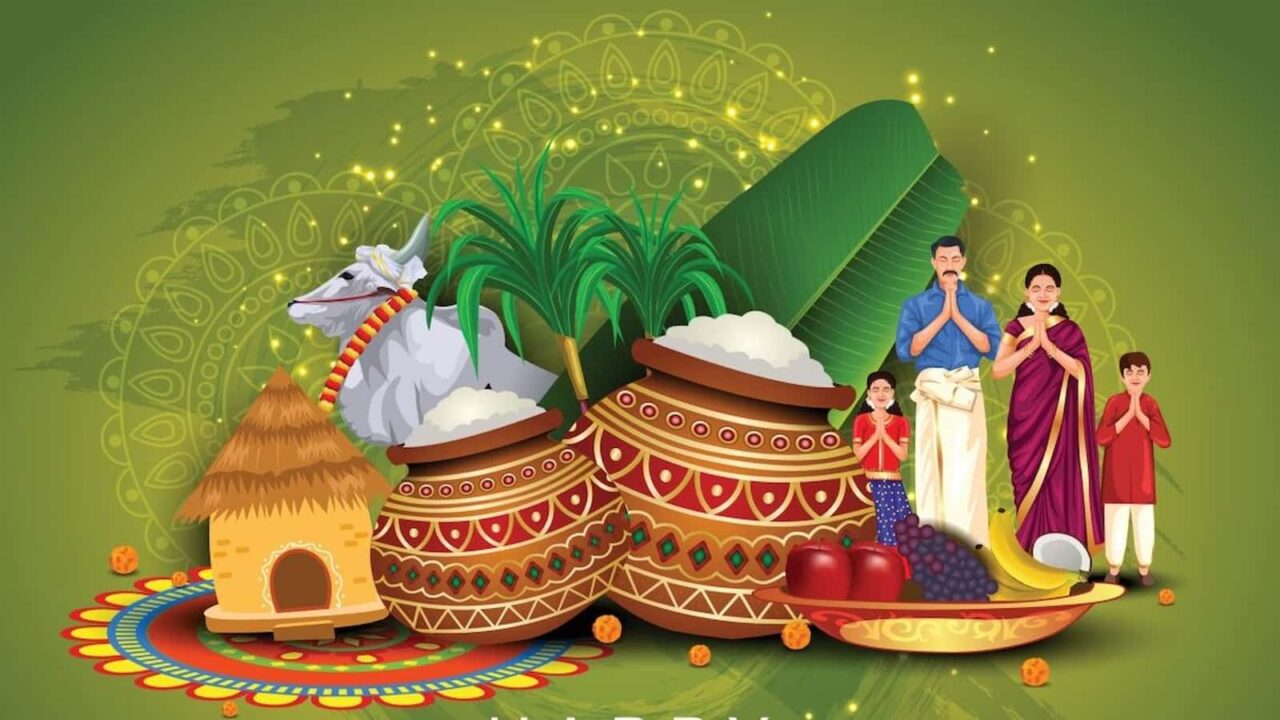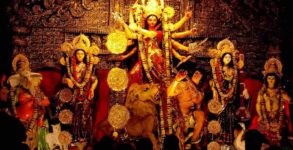Makar Sankranti 2024: Makar Sankranti is an exquisitely fêted occasion in India that commemorates the sun’s transition from the southern to the northern hemisphere and the conclusion of the winter solstice. In observance of the Sun’s passage from Dhanu Rashi to Makara rashi (Capricorn zodiac sign), individuals offer prayers for a bountiful harvest and pay their respects to the Sun God. Despite the presence of divergent appellations and celebrations across different regions, India will unite in commemoration of this momentous occasion.
Makar Sankranti: Mumbai cops ban nylon kite strings; cite hazard for humans as well as birds
Makar Sankranti 2024 occurs on Monday, January 15th.
With 18 days until the event,
Punya Kaal Muhurat for Makara Sankranti 2024: January 15, 7:14 AM to 12:36 PM (Five hours and twenty-two minutes)
January 15, 7:14 AM to 9:02 AM (Duration: 1 hour and 48 minutes): Maha Punya Kaal Muhurat
Moment of Sankranti: January 15, 2:45 a.m.
Continue reading to learn the significance of this festival as well as the precise Makar Sankranti Tithi, Muhurat, Panchang, Choghadiya, and much more.
When does Makar Sankranti occur? The science underlying Makar Sankranti
Despite the Sankranti moment or muhurat occurring on January 14 at 8:49 PM in 2023, Makar Sankranti will be observed on January 15.
Therefore, why is Makar Sankranti observed on January 15 when the Sankranti Moment for 2023 occurs on January 14?
Makar Sankranti is observed during the lunar month of Magh on the Hindu calendar. In contrast to other Hindu festivals, which exhibit yearly variation, Makar Sankranti consistently transpires on either January 14th or 15th. This is because the festival operates by the Solar Calendar rather than the Hindu Luni-Solar Calendar. Consistent with its solar nature, Sankranti typically transpires on the 14th of January throughout the year. On certain occasions, however, the Sun enters Makara Rashi (a constellation or zodiac sign) after sunset in India on January 14th. In such cases, the festival is commemorated on January 15th to indicate the Sun’s arrival in the sign of Capricorn (Makara). Additionally, this signifies the commencement of the sacred stage of Uttarayana, which is regarded as the most favorable period to achieve ‘ mukti’.
According to one legend from the Mahabharata Epic, Bhishma patiently awaited Uttarayan’s demise. Bhishma, during the Mahabharata war, suffered a fatal wound when missiles penetrated his entire body. Before succumbing, he waited for fifty-one nights on this bed of projectiles. Before taking his last breath, he awaited the auspicious day of Uttarayan so that he might attain Mukti from this cycle of rebirth.
What precisely is Punya Kaal? The timing of Makar Sankranti 2023 is documented in Vedic literature.
Combining the Sanskrit words “Punya,” which signifies sanctity, virtue, or “holy,” and “Kaal,” which means “time,” “Punyakaal” translates to “Sacred-Time.” During fleeting periods when the sun transits from one rashi (zodiac) to another, it appears to be in both rashi. This time is referred to as Punya Kaal, and it is extremely auspicious because anyone can benefit from both rashes. During this time, daan (donations and charities), bathing, and performing Surya pooja are all required. The Punya Kaal of Makara Sankranti is determined to be 16 Ghatis (approximately 6 hours and 24 minutes) from the Sankranti Moment, or the time of the subsequent sunrise if the Sankranti Moment occurs after sunset, as per the ‘Muhurt Chintamani’. Makar Sankranti Punya Kaal is regarded as the most propitious occasion because it initiates the Uttarayana, also known as the summer solstice.
Muhurt Chintamani and Narad Puran define the Punyakaal as 16 ghati (6 hours and 24 minutes). This indicates that the Punyakaal for Makara Sankranti 2023 will commence on January 15 at 7:14 AM and conclude at 1:38 PM.
In contrast, Sangrah Shiromani and Brihad Jyotish Saar specify forty Ghati (16 hours) as the Punyakaal for Makara Sankranti. Based on this information, the Punyakaal would occur on January 15 from 7:14 a.m. to 11:14 p.m. However, because Punyakaal is observed exclusively during the day, it is customarily observed from sunrise to sunset, which on January 15 will commence at 7:14 AM and conclude at 5:57 PM.
Furthermore, the latter literature also specifies Atipunyatam Punyakaal (Maha Punyakaal) as commencing at 7:14 AM on January 15 and concluding at 9:14 AM, or five Ghati (two hours), from daybreak.
Festivals of Makar Sankranti in various Indian regions
Makar Sankranti is a festival that is extensively observed across various states of the country, each with its own distinct name and cultural significance. The festival is observed as follows in each state:
Makar Sankranti is a significant festival and a dedicated occasion for women in the state of Maharashtra. Their specialty, Tilgudi Til Laddus and Til Polis, is prepared and exchanged among family and acquaintances by the Maharashtrians. “Til gul ghya god bola” (accept these clouds and utter sweet words) is the greeting they exchange.
Gujarat: Makar Sankranti is observed as Uttarayan in Gujarat. The Gujarati calendar designates this date as the Vad Satam of Posh. Their festive observances closely resemble those of Maharashtra, during which they craft treats to exchange among friends and family, as well as launch kites. Young members of the family receive gifts from the elderly. In Gujarat, Sankranti heralds the arrival of spring.
Uttar Pradesh: The festival is known as Khichdi or Kitcheri in Uttar Pradesh. A month-long Kumbh Mela is scheduled to take place at Prayag, the confluence of the bathing rivers Ganga, Yamuna, and Saraswati, as part of their festivities.
Maghi is the name by which the people of Punjab observe this festival. Observed in the height of winter, on the eve of Sankranti (Lohri), people would light bonfires and perform dances around the Lohri fire. At this festival, the bountiful harvest is commemorated through feasts and traditional Bhangra dance.
Makar Sankranti is officially observed as the Pongal festival in Tamil Nadu. On Pongal eve, Bhagi, discarded possessions are combusted in bonfires. ‘Pongalo Pongal’ is an incantation performed by individuals, particularly women, on the day of Pongal while rice is boiled in a pot of jaggery-sweetened milk. Pongal is a festival spanning four days, and as per the Tamil calendar, the festivities will commence on January 14 with Bhogi Pongal and conclude on January 17 with Kaanum Pongal.
Makar Sankranti is celebrated in West Bengal on the final day of the month of Paush. Hindus perform a sacred immersion at the Millat Ganga Sagar (Ganga Sagar Snan) in the Ganges, where the ashes of 60,000 Bhagirat progenitors are said to have been resurrected.
The Bhuyan tribe of Odisha observes Makar Sankranti by lighting bonfires, dancing, and feasting. This festival ushers in the new year. In addition to selling handcrafted goods, they host processions known as Maghyatra.
The inhabitants of Madhya Pradesh (Bundelkhand) observe Makar Sankranti in the form of a “Sukarat” (Sakarat). With great pomp and circumstance, they exchange well-wishes for one another’s prosperity.
In Kerala, Makar Sankranti is observed under the name Makara Vilakku. Sabarimala attracts visitors from throughout South India to observe the Makara Jyoti. Sabarimala’s deity, Swami Ayyappa, is venerated, and devotees present sustenance in his honor.
Assam: The Maagh Bihu celebration of Sankranti in Assam signifies the conclusion of the agricultural season; locals indulge in the bounty of their land’s produce. It is alternatively referred to as Bhoghaali Bihu or the Food Festival.
Makar Sankranti, which is observed as Suggi in Karnataka, is a farmer’s festival. During the Ellu Birodhu ceremony, they present delicacies comprised of sesame blended with groundnuts and jaggery-sweetened coconuts.
A three-day celebration known as Makar Sankranti holds significant importance for cultivators in the state of Andhra Pradesh. On this occasion, individuals engage in various activities such as adorning house entrances with rangoli designs, tossing old items into the conflagration (Bhogi), reciting prayers, and exchanging greetings. As per the Telugu calendar, the occasion will be commemorated on the Krishna Sapthami of Pausa.
Bihar: The Makar Sankranti celebrations in Bihar, known as Sakaarat or Kichdi, bear striking resemblance to those observed in Uttar Pradesh. Following this, the devotees take a dip in the sacred Ganges. In addition, they organize a month-long Kumbh Mela.
Tripura observes Sankranti as Hangrai, a festival that was originally established to commemorate the immersion of ancestral remains in the sacred Gumti River. For this opulent occasion, individuals curate repasts, beverages, and confections from Tripura while entertaining loved ones.
When is Holi 2024: Date, Panchang, Story, and Significance (newsd.in)
Celebrations of Makar Sankranti throughout the world
In addition to certain European nations, Makar Sankranti, Pongal, and Lohri are observed in the United States of America, Canada, Malaysia, Singapore, and Australia. The festival is known as Ulavar Thirunaal or Thai Pongal and spans two days in Sri Lanka. On the inaugural day, akin to the Sakkarai Pongal prepared during the Pongal festival in Tamil Nadu, Sweet Rice Pudding is concocted by combining simmered milk with rice, jaggery, and sugarcane syrup in the form of an offering to Suriyapakaran, the Sun God. On the second day, known as Mattu Pongal, the oxen are honored for their assistance in cultivating harvests in the fields.
Makar Sankranti timing for the United States of America, Canada, Europe, and Australia.
Makar Sankranti Time (Moment) USA and Canada:
Eastern Standard Time (EST): January 14, 10:19 AM.
Pacific Standard Time (PST): January 14, 07:19 AM.
Central Standard Time (CST): January 14, 09:19 AM.
Mountain Standard Time (MST): January 14, 08:19 AM.
Makar Sankranti Time (Moment) Europe:
Greenwich Mean Time (GMT): January 14, 03:19 PM.
Central European Time (CET): January 14, 04:19 PM.
Eastern European Time (EET): January 14, 05:19 PM.
Makar Sankranti Time (Moment) Australia:
Australian Eastern Daylight Time (AEDT): January 15, 02:19 AM.
Australian Eastern Standard Time (AEST): January 15, 01:19 AM.
Sankranti Characteristics
Based on the Panchang, Karana of the Sankranti 2024 is Balava. According to Muhurta Chintamani, this year’s Sankranti will have the following characteristics:
- Name: Rakshasi
- Age: Adolescent. (Kumari)
- Caste: Bhoot. (Ghost)
- Color of the Cloth: Yellow. (Peeta)
- Top Cloth (Kanchuki): Leaves (Parna)
- Ornaments: Bangles (Kankan)
- Vahana/Vehicle: Tiger. (Vyaghra)
- Upvahan/Secondary Vehicle: Horse (Ashv)
- Weapon in Hand: Mace. (Gadha)
- Emotion, according to Vahana: Fear (Bhay)
- Poultice on Body: Kumkum. (Red Turmeric Powder, not Vermilion)
- Flower in Hand: Jasmine. (Chameli)
- Consuming Food: Sweet Rice Pudding. (Kheer)
- Food Plate Material: Silver (Chaandi)
- In Condition of Pleasure. (Bhoga)
- Position: Sitting.
- Facing (According to Day): West (Pashchim)
- Head Position: South (Dakshin)
- Looking toward (Drishti): North-East (Ishaan Kon)
- Heading toward: North (Uttar)
- Sorrow to: Rakshas
- Star: Daarun.
- Cost of Commodities: Normal (Madhyam)
Important Timings On Makar Sankranti 2024
| Sunrise | January 15, 2024, 7:14 AM |
| Sunset | January 15, 2024, 5:57 PM |
| Sankranti Moment | January 15, 2024 2:45 AM |
| Punya Kaal Muhurta | January 15, 7:14 AM – January 15, 12:36 PM |
| Maha Punya Kaal Muhurta | January 15, 7:14 AM – January 15, 9:02 AM |
| Place: Ujjain [ India ] See More | |
Makar Sankranti festival dates between 2020 & 2030
| Year | Date |
|---|---|
| 2020 | Wednesday, 15th of January |
| 2022 | Friday, 14th of January |
| 2023 | Sunday, 15th of January |
| 2024 | Monday, 15th of January |
| 2025 | Tuesday, 14th of January |
| 2026 | Wednesday, 14th of January |
| 2027 | Friday, 15th of January |
| 2028 | Saturday, 15th of January |
| 2029 | Sunday, 14th of January |
| 2030 | Monday, 14th of January |
Makar Sankranti: Mumbai cops ban nylon kite strings; cite hazard for humans as well as birds


















